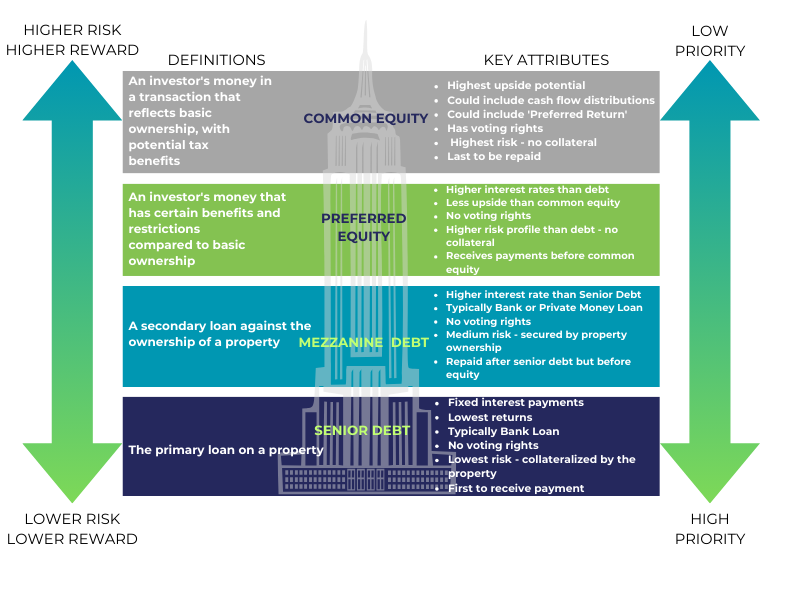

Mezzanine Debt in Commercial Real Estate
Investors are constantly looking for creative ways to maximize returns. Recently it has been difficult to find deals that make sense on paper. One strategy that I have seen gaining traction is mezzanine debt—opportunities for "rescue capital" where investors can secure equity-like returns in this high-interest-rate environment.
Understanding Mezzanine Debt:
Mezzanine debt, often referred to as "mezz debt," stands between senior debt (traditional bank loans) and equity in the capital stack. This hybrid financing instrument offers a blend of debt and equity characteristics, providing investors with an avenue to participate in the upside potential of a project while benefiting from fixed-interest payments.

Key Features of Mezzanine Debt:
1. Equity-Like Returns: Investors in mezzanine debt receive interest payments, similar to traditional debt, but they may also participate in the project's success through additional returns tied to its performance, such as profit-sharing arrangements.
2. Risk and Reward: With greater risk comes greater potential reward. Mezzanine debt is considered riskier than senior debt, as it lacks the security of collateral. However, this risk is offset by the prospect of higher returns and the ability to participate in the project's success.
3. Flexibility: Mezzanine debt transactions are often more flexible than traditional financing structures. Investors and developers can negotiate terms that align with the specific needs and goals of the project.
In an era of climbing interest rates, this financial instrument allows investors to navigate the market landscape dynamically. By exploring mezzanine debt, investors can access the potential for equity-like returns while actively participating in the success of the projects they support. As the CRE landscape continues to evolve, mezzanine debt stands out as a valuable strategy for those looking to optimize their investment portfolios.




Comments